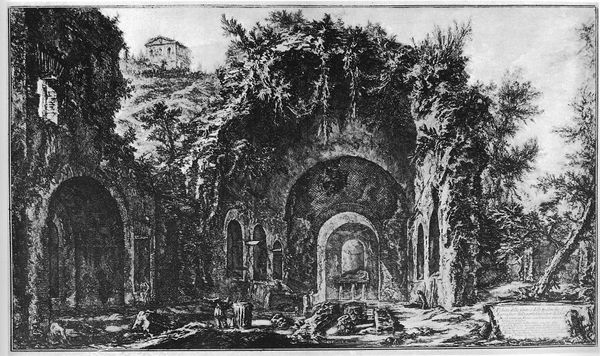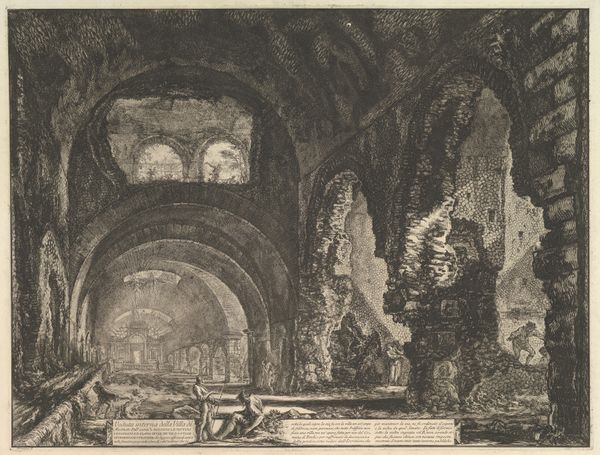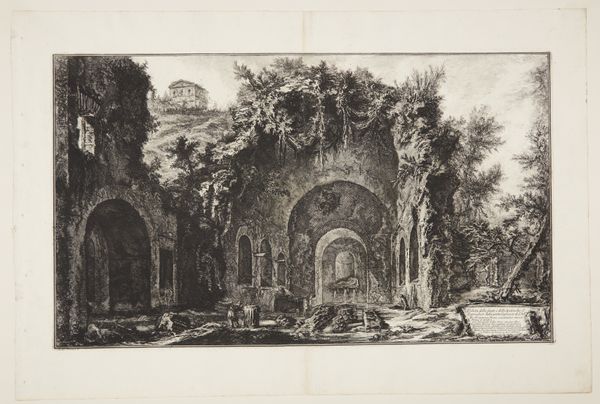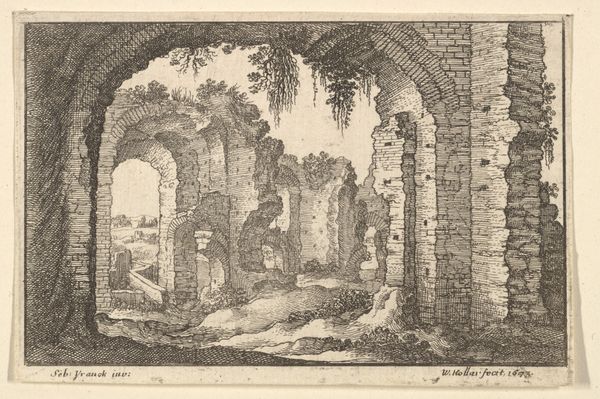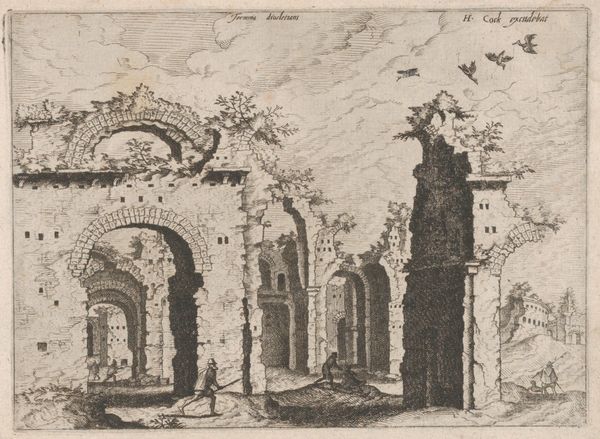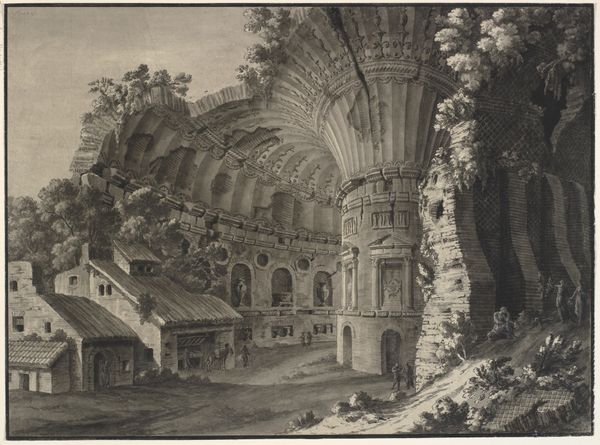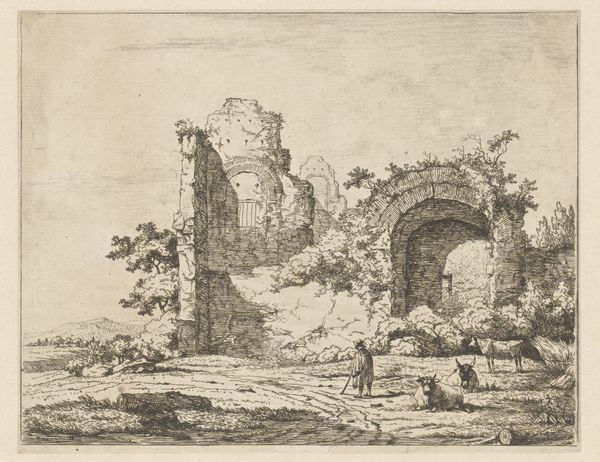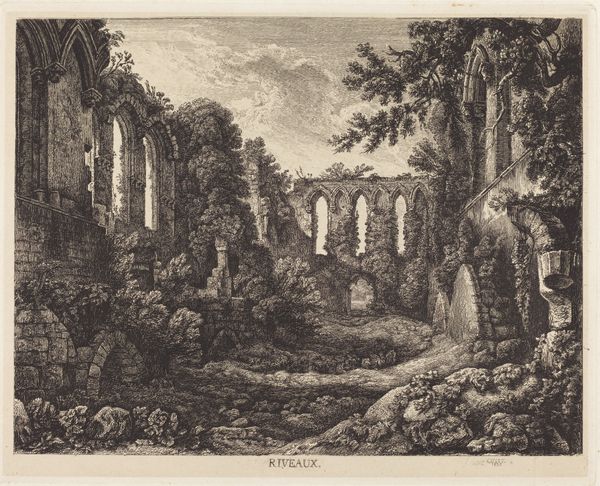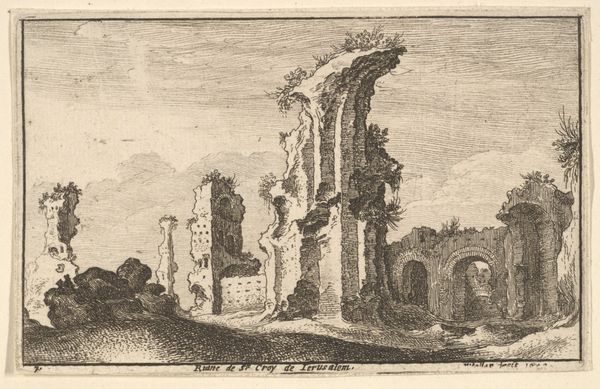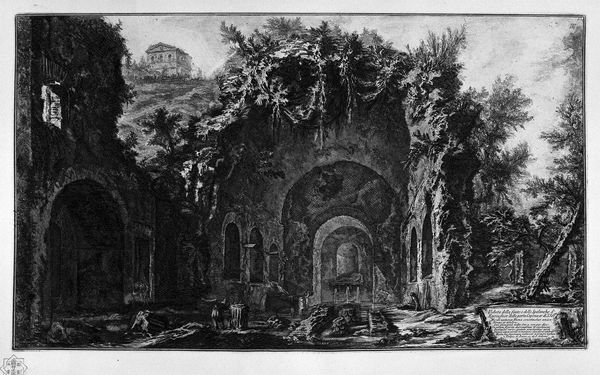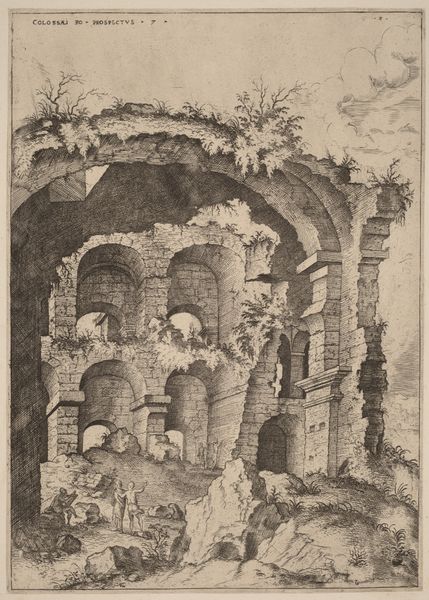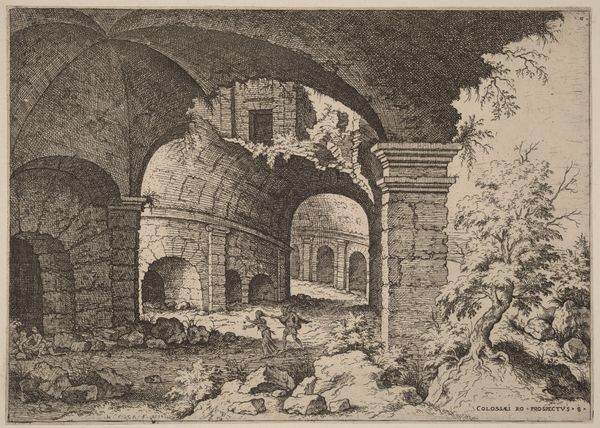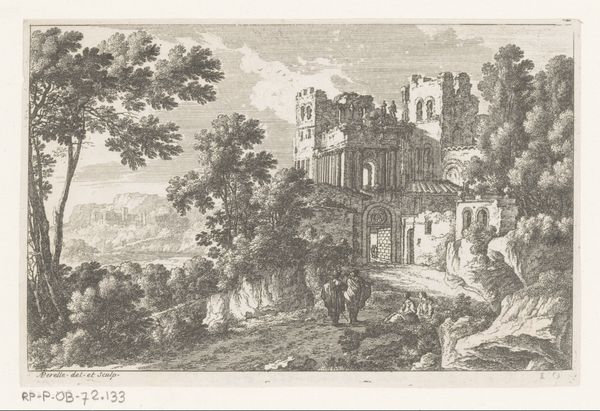
The so-called Grotto of Egeria (Veduta della fonte e delle spelonche d'Egeria fuor della Porta Capena) 1761 - 1771
0:00
0:00
drawing, print, etching, engraving, architecture
#
drawing
#
neoclacissism
# print
#
etching
#
landscape
#
romanesque
#
engraving
#
architecture
#
building
Dimensions: sheet: 16 x 27 1/4 in. (40.6 x 69.2 cm)
Copyright: Public Domain
Giovanni Battista Piranesi created this etching, "The so-called Grotto of Egeria," capturing a vision of ancient Rome as filtered through the lens of the 18th century. Piranesi's Rome was one of layered histories, where classical grandeur coexisted with decay. He portrays a space believed to be the sanctuary of the nymph Egeria, who advised the Roman King Numa Pompilius. But notice how Piranesi presents the grotto not as a site of pristine myth, but as a ruin, overgrown and reclaimed by nature. The figures in the foreground seem dwarfed by the scale of the architecture, inviting us to contemplate the passage of time and the transience of human endeavor. This wasn’t just documentation; Piranesi was creating an atmosphere, and it asks us to consider how the past is never truly gone, but continues to shape our present.
Comments
No comments
Be the first to comment and join the conversation on the ultimate creative platform.
